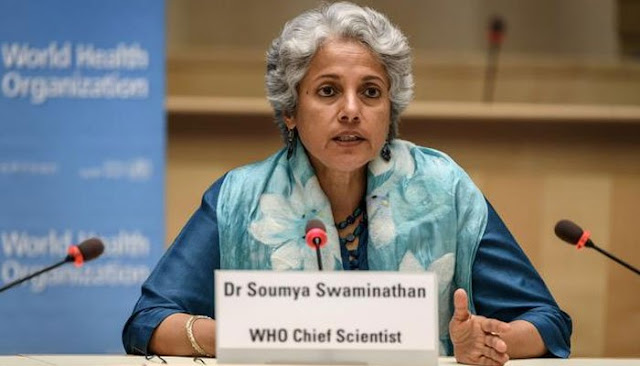World Health Organisation (WHO) chief scientist Dr Soumya Swaminathan has said that while the coronavirus can survive in the air sometimes and then be transmitted, it only happens in very "limited environments". Talking to India Today, Dr Swaminathan noted that when someone speaks, shouts, sings, or even breathes, there are a lot of droplets that come out of their mouth. "These are of different sizes and what happens is that the larger droplets, they fall to the ground [after travelling] one or two metres and that is why social distancing is recommended — so that these do not fall from one person to another directly," she said. "There are also smaller droplets these are small, less than five microns in size — called aerosols at times. They can stay in the air and take a little longer to settle down. They can move around by wind and so these particles could be inhaled by other people in the vicinity, and this can be called air transmission," Dr Swaminathan said.
Know more: Latest updates on coronavirus
The WHO official said that coronavirus, however, is different from viruses like measles, etc. which are truly airborne — people who come in later in the room can breathe it in. "There has been no proof of that as far as COVID-19 is concerned." "I think this distinction between the two types of airborne transmissions should be kept in mind," said Dr Swaminathan. "But we have also seen a super spread, like in choirs, nightclubs, or people standing close and large numbers got infected. That could be from person to person, or if you are in close proximity, you could catch the virus by breathing, as it stays in the air for 10-15 minutes," she said. The WHO scientist said that if coronavirus was truly airborne, "all of us could have been infected with it by now". The majority of the transmission is by droplets and if safety measures are taken, we can control the virus, she said.
Read more: Hypertension most prevalent condition among COVID-19 patients
WHO's technical lead Benedetta Allegranzi said: "The possibility of airborne transmission in public settings, especially in very specific conditions, crowded, closed, and poorly ventilated settings that have been described, cannot be ruled out." "However, the evidence needs to be gathered and interpreted, and we continue to support this." Talking about whether herd immunity was achievable, Dr Swaminathan said: "Achieving herd immunity is going to take a very long time. Secondly, it is going to come at a cost in terms of loss of lives, illness in the community, and prolonged lockdowns," she said.


Comments
Post a Comment